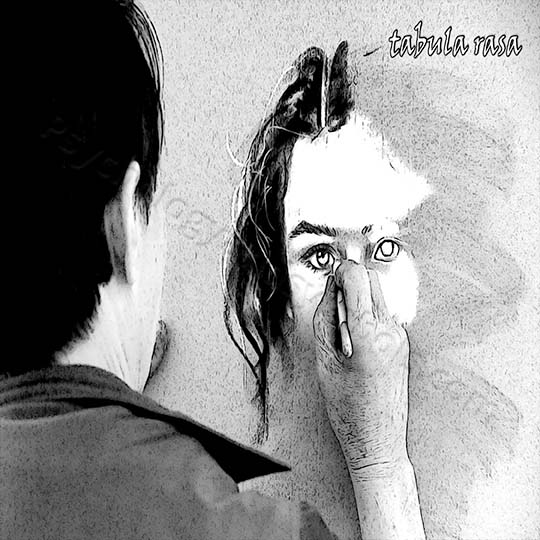Volume 1 Chapter 5

Symbols of Psychological Rebirth during the Renaissance, the Scientific Revolution, and the Enlightenment
Birth of Modern Science
Renaissance
The Crisis of the Late Middle Ages in the fourteenth and fifteenth centuries ended centuries of European stability as the crises led to changes in all aspects of social and psychological life because of war, plagues, schism, and religious upheavals in Christianity. The Reformation would challenge Papal authority and forever change the practice of Christianity. During this time, the Arabic world flourished scientifically, and, in China, the Tang Dynasty developed into one of the greatest dynasties in Chinese history.
Although the foundation developed during the late Middle Ages, Renaissance thought peaked during the fifteenth and sixteenth centuries, providing the transition from the Middle Ages to modernity. The Renaissance would be characterized by the effort to revive and surpass the achievements of the Axial Age Greeks as symbolized dramatically in the School of Athens completed by Raphael around 1509.
Inspiration for the Renaissance often came from the arts; human beings now replaced or became humanized religious figures. After centuries of Christian efforts to destroy any remnants of Greek philosophy, The School of Athens fresco by the great Renaissance painter Raphael (1483–1520) provided a symbolic representation of the return of Greek thought in Western civilization.
Scientific Revolution
Although the sixteenth and seventeenth centuries mark the emergence of modern empirical science, dates alone cannot mark how the revival of a focus on the physical world changed not only scientific inquiry but how human beings viewed themselves in the modern world. The Scientific Revolution established empirical science as the dominant philosophy of science at the expense of other scientific approaches, most notably the metaphysical, hermeneutic, and social.
Now “real” science meant the ability to objectively measure and quantify the human experience. It was the belief that qualitative, phenomenological, and subjective experiences could not be empirically measured and therefore not under the purview of “real” science. Most importantly, the Scientific Revolution liberated science from religion. and the unending complexity of the social, political, socioeconomic, and cultural influences on knowledge. Yet many of the scientific revolutionaries envisioned societal and political reforms based on empirical science principles.
The Enlightenment
The Enlightenment was the culmination in the seventeenth and eighteenth centuries of the Renaissance and the Scientific Revolutions. Often called the Age of Reason, Enlightenment concepts centered on Renaissance humanism and the empiricism of the Scientific Revolution, based on the values of reason, happiness, equality, liberty, freedom, and the separation of church and state.
The beginning of Enlightenment is attributed to Rene Descartes, who unsuccessfully laid the foundation to construct a science based in metaphysical principles, particularly the dualistic separation of mind and body. Spinoza challenged his assertion of dualism of material substance and consciousness by the assertion the body and mind were “on the same coin,” a double aspectism, meaning physiology and psychology inseparable. For Immanuel Kant, Enlightenment expressed the need for intellectual freedom and awakening from a deep “dogmatic slumber.” Enlightenment was not a result of a lack of understanding, but from a lack of courage to use reason and intellect without the direction of external authority figures. The radical empiricism of John Locke that nonphysical exploration of the mind had no place in science would influence the development of behavioral psychology in the twentieth century which rejected any metaphysical understanding of human consciousness.
For Fredrich Hegel (1770–1831), history was a story. He believed the scientific method and empirical sciences left no place to situate humanity in history. The natural science focus on cause neglected the why, or the reason, for ongoing conflicts in human society. The resolution of discord occurred throughout history with the development of the modern state. For Hegel, history is an ongoing dialectic process of thesis and antithesis, resulting in a new synthesis.
Romanticism
In Hegelian terms, The Romantic movement led a counterrevolution, an antithesis against the Enlightenment. Led by Jean Jacques Rousseau, who believed the Enlightenment not only rejected feelings, but had the erroneous idea that emotions were dangerous. For Rousseau it is through nature where one feels a connection to God; it is where the natural order is uncorrupted. The socialization process causes the repression of feelings and natural desires that leads to evil and anti-social behavior. As Enlightenment leaders looked to create modern versions of classical Greek thought, Rousseau searched for answers in ancestral societies, finding that some still existed; he idealized what he called the “noble savages.”
Chapter Symbols

Fig 5.1 – School of Athens
symbol Info
Fig 5.2 – Joan of Arc
symbol Info
Fig 5.3 – Modern Printing Press
symbol Info
Fig 5.4 – Plague Psychology
symbol Info
Fig 5.5 – Ockham Razor
symbol Info
Fig 5.6 – Rennaissance
symbol Info
Fig 5.7 – David and Eve
symbol Info
Fig 5.8 – Archetypal Mona Lisa
symbol Info
Fig 5.9 -Last Super Revisited
symbol Info
Fig 5.10 – Vitruvian (Wo)Man
symbol Info
Fig 5.11 – New World Exploration
symbol Info
Fig 5.12 – Copernican Revolution
symbol Info
Fig 5.13 – Galileo’s Telescope
symbol Info
Fig 5.14 – Idols of Grave Errors
symbol Info
Fig 5.15 – Newtonian Science
symbol Info
Fig 5.16 – Radical Empiricism
symbol Info
Fig 5.17 – Peasant Psychology
symbol Info
Fig 5.18 – The Three Estates
symbol Info
Fig 5.19 – Rational Dualism
symbol Info
Fig 5.20 – Pure Reason
symbol Info
Fig 5.21- Dialectic Method in History
symbol Info
Fig 5.22 – Hegelian Philosophy
symbol Info
Fig 5.23 – Romanticism
symbol Info
Fig 5.24 – American Shadow
symbol Info
Fig 5.25 – Lady Liberty
symbol Info

